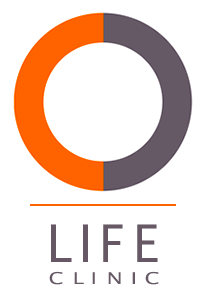Happy International Women’s Day!

We wish all the women and girls of the world a very happy Women’s Day!
On March 8th each year, International Women’s Day is celebrated to recognise the social, economic, cultural, and political achievements of women and to raise awareness about discrimination.
It is easy to forget that many millions of women worldwide are still fighting for their rights and being denied equal opportunities. How about the poisoning of hundreds of schoolgirls in Iran that has hit the headlines this month? It is alarming and a shocking reminder to us that gender inequality and violence & abuse against women persists today.

Spotlight on reproductive equality
Another aspect of discrimination concerns women’s reproductive rights. Let’s talk about it! What does it mean? How big a problem is it? What is being done about it?
Programme of Action, WHO
What is equality in reproductive health?
“Reproductive health is a state of complete physical, mental and social well-being … in all matters relating to the reproductive system” which “implies that people are able to have a satisfying and safe sex life and that they have the capability to reproduce and the freedom to decide if, when and how often to do so”
Reproductive rights include prenatal services, safe childbirth, and access to contraception. Equality for women in this regard means that they are entitled to reproductive health information, services and goods that are:
- available in sufficient quantity;
- accessible to all (physically and economically);
- accessible without discrimination; and
- of good quality (scientifically and medically appropriate)
Equality in sexual and reproductive health is fundamental to individuals, couples and families. It is essential to achieve equality here not only because it is a basic human right but also for successful social and economic development of communities and nations.
The provision of reproductive health and rights
There are many aspects to the provision of sexual and reproductive health services. These include:
- family planning (including access to contraceptives). In many low-income countries the high demand for contraceptives is either unmet or unaffordable. It is estimated that 29 percent of women in developing countries have an unmet need for modern contraception.
- safe motherhood (antenatal / postnatal, obstetric care),
- abortion (where permitted by law) and post abortion care,
- treatment and prevention of sexually transmitted diseases. WHO reports that more than 1 million STIs are acquired every day worldwide. Read the WHO report here.
- prevention and care for gender-based violence in reproductive health such as, forced sterilization, forced virginity examinations and forced abortion;
- action against harmful traditional practices, such as female genital mutilation (FGM) and early / coerced marriage. In 2023 alone, there are 4.32 million girls around the world who are at risk of undergoing female genital mutilation (United Nations Population Fund / UNICEF)
Unfortunately, violations of reproductive health and rights are all too frequent. Additionally, the global availability and accessibility of these services are worrying disparate both within-country and between countries.
“The current situation shows how devastating the neglect of sexual and reproductive health can be. The differences in reproductive health—between the rich and poor, both within and between countries—are larger than in many other areas of healthcare (Gwatkin and others 2003; Bernstein 2004). Maternal mortality takes some 529,000 lives a year. Of those deaths, around 68,000 are due to unsafe abortion, a sign of the need for better access to higher quality family planning services to prevent unwanted pregnancies and (where permitted by law) to safe abortion services.”
Report to the UN Secretary-General, ‘Investing in Development
– A practical plan to achieve the MDGs’, 2005 (Part 2, pg. 82)

The UN’s reproductive health goals
In 2005, world leaders resolved to ensure universal access to reproductive health services and information by 2015. This was included as part of the UN’s 8 Millennium Development Goals (MDGs). But we fell behind and the MDGs were scrapped and replaced by the Sustainable Development Goals (SDGs) in 2016.
These dauting goals are still challenges today in 2023. WHO reported that ill-health from causes related to sexuality and reproduction remains a major cause of preventable death, disability and suffering. They found that this is particularly the case among women in the developing world. Furthermore, many women lack access to reproductive health information, services, and facilities. Many more are unaware of their reproductive rights (including the right to plan their families).
Overcoming all these challenges will also benefit progress in other areas of human rights such as reducing extreme poverty and hunger, ensuring equal educational opportunities, gender equality and environmental sustainability.

What is the HRP (Human Reproduction Programme)? The UNDP/UNFPA/WHO/World Bank Special Programme of Research, Development and Research Training in Human Reproduction (HRP) was established in 1972 and has brought policymakers, scientists, healthcare providers & clinicians and community representatives together to help find sustainable solutions to sexual and reproductive health issues globally. Its work is still ongoing today. For more information click here.

Can we reach equality?
In conclusion, there is much work to be done to achieve universal access to reproductive healthcare and prevent sexual violence and harmful practices. We at Life Clinic applaud the efforts of all organizations working towards attaining this equality, with particular mention to the role of the HRP, WHO, UNDP, UNFPA and UNICEF amongst others who work exhaustively to meet these challenges. We perhaps must accept that the goal of reproductive equality may be a long time coming. But let’s not forget that each and every effort goes some way to reaching it. We must soldier on!
Related links for the above mentioned organisations are listed below. Please read more about their work and browse their research papers.
Once again, we wish the women of our world a beautiful day!!












